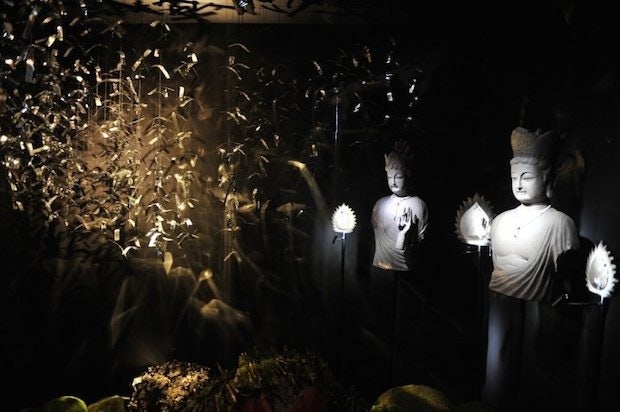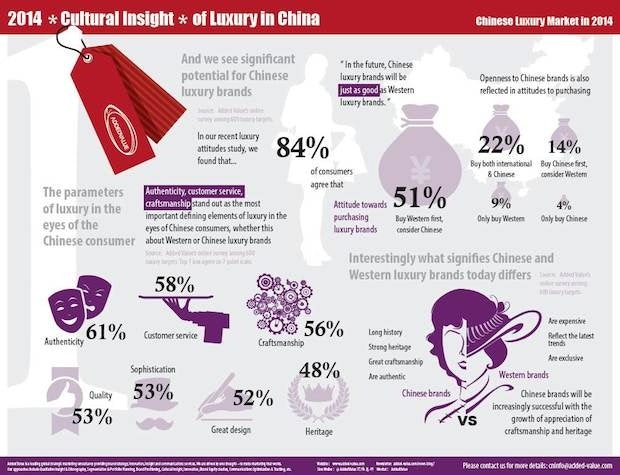
Qeelin's high jewellery exhibition held at the Palais Royal in Paris in June 2014, which was inspired by China's Mogao caves. (Courtesy Photo)
China’s luxury market may be dominated by major European labels for now, but a new survey finds that the vast majority of Chinese consumers expect homegrown high-end brands to catch up to the big players in coming years.
According to a new report by consultancy Added Value which surveyed 600 Chinese luxury consumers, 84 percent of respondents agreed with the statement that in the future, Chinese luxury labels will be “just as good as Western brands.”
This interest in local luxury is already showing from purchasing habits, according to the report. At total of 22 percent of respondents said that they buy both international and Chinese brands, while 14 percent buy Chinese brands before foreign ones. Western brands still have the edge over Chinese companies, however: 51 percent of those surveyed said that they always buy Western brands first and consider buying Chinese second.
“Authenticity” was the most important “defining element” of luxury among survey respondents, with 61 percent choosing the term when asked. “Customer service” and “craftsmanship” were the second and third most important factors, and were selected by 58 and 56 percent of respondents, respectively. These characteristics were followed by quality, sophistication, great design, and heritage. Surprisingly, these were not the main characteristics selected when the respondents were asked to define Western luxury brands—instead, the top characteristics chosen were "expensive," "trendy," and "exclusive."

According to the report, Chinese brands have several key things going for them that make them popular with Chinese consumers. First, many of them artfully merge elements of Chinese traditional culture with contemporary design, such as jeweler Qeelin with its signature jewelry pieces shaped like the qilin, a mythical animal in Chinese culture. Meanwhile, brands such as Shang Xia create beauty by embracing natural materials, while Chinese label Mixmind (which was made popular by Chinese First Lady Peng Liyuan) embraces an aesthetic of understated minimalism. In-store experience is also an important factor for Chinese consumers: Mixmind features retail spaces with a multi-sensory experience that combines smell, touch, sight, and sound, while K11’s malls add artwork to the shopping environment.
For foreign brands to keep up with rapidly changing Chinese tastes, they will have to tune into what Chinese consumers are looking for in a luxury label. Major Western conglomerates are starting to see the value of luxury with Chinese heritage, and have made several significant acquisitions in recent years: Kering bought Qeelin in 2013, while Hermès backs luxury label Shang Xia and Diageo bought a major stake in Shui Jing Fang baijiu in 2013.